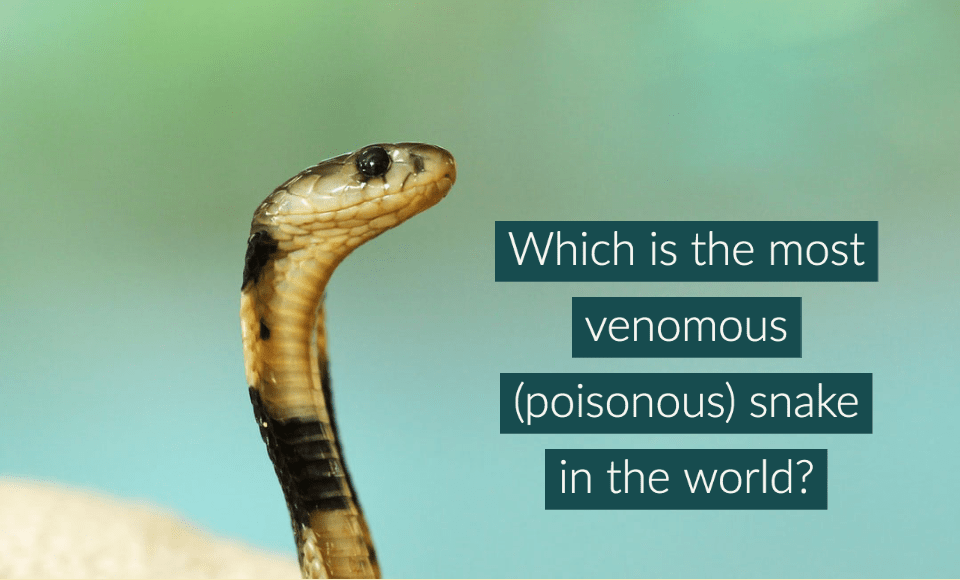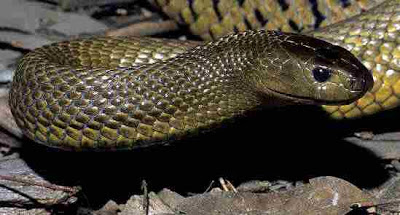In every continent of the world, there is at least one snake species (except Antarctica). In fact, it’s not uncommon to find some snake lurking around in your backyard. Snakes have earned a negative reputation over the course of time. And that is not totally undeserved since they have been known to hurt humans and sometimes even cause death. However, as with most animals, they almost never attack you until they feel threatened. Snakes can be harmful to us; nonetheless, we continue to be fascinated by them. They are some of the most venomous creatures on the surface of the planet. But even in snakes, which snake is the most venomous one?
First, we should note that reptiles have been on this Earth since long before we have. They date back to the time of the dinosaurs, which was more than 300 million years ago. The earliest fossil records tell us that snakes are a bit more recent, originating about 100 million years ago. That means that they survived the extinction that killed the dinosaurs, and have made it alive till now. This wasn’t just pure chance; they survived because they are well adapted to do so. One thing that undoubtedly helped them was their ability to inject poison into their prey. However, not all snake species are poisonous.
Today, there are more than 2 400 snake species in the world. From these, only about 600 species have poison in their bodies. However, even from the poisonous snakes, not all are dangerous. It is estimated that there are only about 100 species of snakes that can pose a threat to the people who come across them. One reason for this is that not all the species that are poisonous are venomous. The terms “poisonous” and “venomous” are often exchanged, even though they are not the same. A poisonous being can have poison inside of it, but it isn’t of any danger to anyone because it can’t inject the poison into something else. A venomous organism, on the other hand, is capable of injecting its poison into other creatures. It can do this through its fangs or, in case of a scorpion or bee, by using its tail or stinger.
When it comes to venomous snakes, there are several deathly snakes. To clear things off, we should mention that the most venomous species of snake is not necessarily the most dangerous one. This is because when it comes to a snake posing a danger to other creatures, things like how much venom it can produce at one time, how efficient the snake is in attacking and stinging, and how aggressively it reacts to any potential threat determine the mortality rate. The black mamba, for instance, is considered by some to be the deadliest snake in the world, even though it comes nowhere close to the most venomous snake in the world. The fear surrounding the mamba is mostly due to its unpredictable nature, and its tendency to attack humans much more frequently than other snakes. This also gives it one of the highest kill counts against humans among the snake species.
Most naturalists agree that the Australian taipan, more popularly known as the inland taipan, is the most venomous snake in the world. The inland taipan has evolved to specifically hunt mammals, which means that its venom is much better adapted to kill warm-blooded organisms than that of other snakes. According to one estimation, a single bite from this snake is lethal enough to kill at least 100 adults or 250 thousand mice. For comparison, that’s almost 50 times more lethal than the venom of a king cobra. If left untreated, the bite of an inland taipan can kill the victim in as little as half an hour. Besides that, it is an unnervingly fast and reflexive snake, said to strike multiple times within a few seconds, in a single attack. It has an unerring accuracy and is noted for rarely missing its prey.
Despite all of this, the inland tiger is not a dangerous snake until seriously threatened. It is very reclusive of other species and will always try to avoid a conflict if it can. So, if you ever happen to spot one in the wild, it would be in the best interest for you and, mostly (let’s be honest), for the rare snake, if you observed it from a distance.
Additional reading:
Inland Taipan (Wikipedia)

